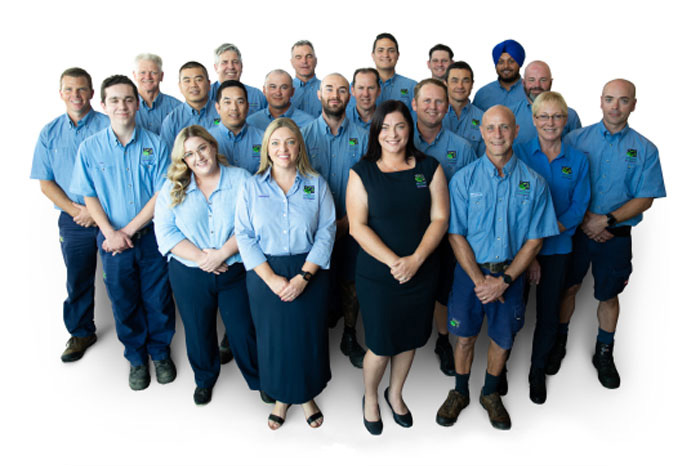Learn How to Inspect and Protect Your Property from Termites Using QBCC Visual Inspection Guidelines
Termites pose a constant threat to homes in Australia, and inspecting key areas of your property is critical for early detection. One of the most vital areas to monitor is the slab edge, commonly known as the visual inspection zone. This article will guide you through how to inspect this critical area, check weep holes in brick homes, and inspect raised homes. We’ll also cover the QBCC’s recommendations for termite protection and explain why relying on visual inspection zones alone may not be enough, especially for brick or rendered homes.
What is a Visual Inspection Zone?
The visual inspection zone is a clear area around your home’s perimeter, designed to allow easy detection of termites before they enter your home. Keeping this area unobstructed helps to spot mud tubes or other termite activity and prevent severe damage. However, relying solely on this inspection zone may not be sufficient, especially for homes with external brick or rendered walls.
The Risk of Concealed Termite Entry
Most termite infestations occur in a concealed manner. Operating subterraneanly, termites are constantly seeking small gaps in brickwork embedded in the soil or joins in the concrete slab. These entry points are often invisible and undetectable to the naked eye. This is especially problematic in homes where the external brick wall sits directly on the ground, or where the concrete slab edge is covered or not properly exposed.
If your home’s visual inspection zone is obstructed or the slab edge is hidden, you are at a significantly higher risk of concealed termite entry. In such cases, termites can silently enter and cause severe damage without any visible warning signs. Simply relying on a clear inspection zone may give a false sense of security. Instead, a termite management system—such as chemical barriers or baiting systems—provides more reliable, long-term protection.
How to Check Your Own Home’s Slab Edge and Weep Holes
Here’s a step-by-step guide for performing a basic termite inspection of your home:
- Walk the Perimeter: Start by walking around your home, paying close attention to the slab edge or base of your walls. Ensure this area is visible, clear of soil or debris, and inspect for mud tubes or cracks.
- Inspect Weep Holes in Brick Homes: Check that weep holes are not blocked by soil or mulch, as this can prevent moisture from escaping and allow termites to enter. Look for signs of termite activity, such as mud tubes.
- Rendered Homes: Examine the rendered surface for cracks, especially near the base, and ensure these are sealed if found.
- Raised Homes: Check the stumps or piers supporting the home for termite mud tubes or damage. Clear away any debris or plants from underneath the raised floor.
- Check Attachments: Inspect all attachments like decking, verandas, pergolas, and fences to ensure they are not providing concealed access for termites. Keep timber components off the ground and inspect for decay or mud tubes.
- Landscaping Materials: Make sure soil, mulch, or plants are not covering the slab edge or blocking weep holes. Landscaping materials should be kept away from the home’s foundation to reduce the risk of termite entry.
QBCC and National Building Code Recommendations
The Queensland Building and Construction Commission (QBCC) and the national building code recommend maintaining a clear visual inspection zone of at least 75mm around the slab edge. This space should be free from any obstructions like soil or mulch to allow for effective termite inspections and early detection. However, for brick or rendered homes, this may not be enough, as termites can exploit concealed gaps.
Why You Can’t Rely on Visual Inspection Zones Alone
While visual inspection zones are a key part of termite prevention, they are not foolproof—especially for brick and rendered homes, where termites can easily find concealed entry points. Gaps in brickwork or joins in concrete slabs that are hidden by soil or other obstructions make it difficult, if not impossible, to detect termites until the damage has already been done.
For these reasons, a termite management system is often the best solution to prevent termite infestation. Chemical soil treatments, termite baiting systems, or a combination of treatments offer an extra layer of protection and help detect termites before they cause serious structural damage.
What If You Find Signs of Termites?
If you notice mud tubes, cracks in your foundation, blocked weep holes, or signs of damage on decking or fencing, it’s essential to act fast. Contact Conquer Termites immediately for a professional termite inspection. Early detection is key to preventing significant structural damage.
Regular Inspections and Comprehensive Protection
Maintaining a clear visual inspection zone and monitoring attachments like decking and fences are vital. However, even with regular DIY inspections, professional termite assessments are crucial for protecting your home. At Conquer Termites, we offer thorough inspections and advanced termite treatments to help safeguard your property from termites.
Protect Your Home Today
Don’t wait for termites to cause damage—proactively protect your home. Contact Conquer Termites today to schedule a professional inspection and ensure your home remains termite-free.
More information on measurement guidelines for Termite Inspections:
https://www.conquertermites.com.au/articles/how-to-do-a-termite-inspection/
Call us Now on 1300 417 007



